The question of when you can feel the first movement of the fetus during the second pregnancy is actively discussed on the forums and is asked to obstetricians-gynecologists at scheduled examinations. . On this occasion, there are so many different opinions and conjectures that even the most sober-minded pregnant woman begins to get confused, doubt and worry. And this does not benefit either her or her baby.
So, many are sure that at the beginning it must be fixed much earlier than at. And if this does not happen, then something is going wrong: the child does not move, because he is behind in development, etc. Of course, it is time to panic from such thoughts ... In this article we will try to dot the i's.
The answer to the question about , at how many weeks the second child begins to move will surprise many. Exactly the same time as the first one. This happens about 8 or 9 weeks from the moment of conception.
The time of the beginning of the first movements does not depend on what kind of pregnancy it is. But the early movements of the crumbs are not felt by the mother. The baby is still too small and does not even touch the walls of the uterus. Therefore, there can be no shocks, and movements can really be fixed only on .
But the movements of the fetus during the second pregnancy begin to be felt when the child is already large enough: he periodically squeezes his fingers and pulls on the umbilical cord. And women who have already given birth once do often record tremors a few weeks earlier. If during the first pregnancy the movement of the child begins to be felt approximately in the middle of the term, then with the second mother already by the end fourth month can feel the baby. The norm, in any case, no matter what the child is talking about, is the beginning of stirring in the period from 16 to 24 weeks.
Causes of earlier sensations during the second pregnancy
Thus, the length of time between when fetal movements begin during the second pregnancy and when the mother feels them may be less than when carrying the first child. Sometimes the difference is a week, and sometimes a month. This is explained simply: experience!
When the baby starts to move, it is very similar to the sensations during intestinal motility. Primiparous women simply take the timid pushes of the baby for signals from the digestive system. Only by the middle of the term, the movements of the baby become so active that the expectant mother understands: this is it.
When the child begins to move during the second pregnancy, it is easier for a woman who has already experienced all this once to understand where the peristalsis is and where the tremors are. Therefore, it fixes the first movements of the baby often earlier. But this is not at all necessary. Sometimes sensations appear at the same time, and sometimes later. Indeed, in addition to the order of pregnancy, there are other factors that affect the ability to feel tremors.
Why Feelings Are Different
The timing of fixation of the first fetal movements during the second pregnancy (as, indeed, with any in a row) depends on many factors. Not all expectant mothers, even those with experience, know about this.
The period of occurrence of tangible movements is affected by:
- Mother's weight. The larger it is, the later a woman can feel tremors. The fat layer on the abdomen does not allow the pregnant woman to feel the still rather weak activity of the baby.
- Fetal weight and height. The larger the child, the sooner it will begin to make itself felt.
- The threshold of sensitivity of a woman. If it is overestimated, then the mother will feel the first movements of the fetus during the second pregnancy earlier, and if it is underestimated, then this event will happen closer to the middle of the term.
- The amount of water. The more of them, the later the baby will make itself felt.

In addition to these four main reasons, both the temperament of the baby and the lifestyle of his mother and her play a role. In any case, it should be remembered that the timing of the movements of the child during the second pregnancy does not have to come earlier than during the first. Yes, it happens often, but not always. If the baby does not make itself felt even in the middle of the term, there is no reason to worry. After all, the period from 16 to 24 weeks is considered the norm for the first movements of the fetus during the second pregnancy.
Motor activity of the child and the sensations of the mother
It is important for expectant mothers to know how and at how many weeks the second child should move. It has already been said that his first movements begin as early as 2 months, but the pregnant woman does not feel them. Closer to the middle of the term, weak signals are already recorded. They are barely visible and look like fermentation in the intestines.
From the 7th month, the baby learns to breathe and swallows amniotic fluid, which causes him to hiccup. Mom feels it as quite strong, rhythmic jolts. On the given period the peak of the activity of the baby falls. Further, the movements will not be as frequent, but more noticeable.
Methods for counting movements
In order not to miss possible complications, the expectant mother must constantly monitor the movements of the child: during the second pregnancy, the first or third - it does not matter. There are several ways to count baby movements.
Here are the main methods:
- Pearson technology. From 9 a.m. to 9 p.m., movements are counted daily and every 10th is recorded on paper. Abrupt schedule disruptions should be cause for concern.
- Cardiff method. Within 12 hours at any convenient time the pregnant woman fixes the movements, indicating the interval between every tenth in a special table.
- Sadowski method. You need to start counting at 7 pm, lying on your left side. Within an hour there should be 10 or more movements. If they are less and then they do not become more frequent, you should contact your doctor.

All of the above methods can be applied starting from about 28 weeks, when the movements during the second pregnancy are already clearly felt. For more early dates these methods are ineffective. The movements of the child are still too timid and chaotic.
Behavior of the child before childbirth
Many pregnant women begin to panic, noticing that at the very end of the term, the child has practically stopped moving. In fact, this is normal and says that they will begin any day. The baby is preparing for the birth and, freezing, saves strength. In addition, he is already very crowded in the uterus. But we are not talking about complete silence. Movement, though rare, should be felt.
And it happens, on the contrary, just before the contractions, the baby begins an unprecedented physical activity. This is also a normal . When a child during the second pregnancy began to move very much the day before, he may be trying to take the most comfortable position for birth.
The movements disappeared abruptly: causes and actions
Sometimes the movements disappear abruptly even at an earlier date. Silence is very important here. Normally, each series of active movements is replaced by rest. At this time, the child is sleeping. If he did not move after three hours of calm, you need to beware. If movements are not felt for more than 12 hours, it's time to sound the alarm.
The long absence of movement can be due to various reasons. And in most cases, everything ends well. But it's better to be safe once again. After all, the cause of the disappearance of shocks can be both, and when measures need to be taken urgently.
In order to safely give birth to a healthy baby, it is important not only to know when the fetus begins to move during the second pregnancy, but also to carefully monitor its motor activity. And from 28 weeks - count the shocks and fill out a special table.
Useful video about fetal movements
I like!
No matter how the expectant mother listens to her growing tummy in the hope of quickly feeling when her baby finally starts to push, the first movements always take her by surprise. But how your heart aches with joy when you suddenly realize that the tickling scratch inside is the precious baby! When does this miracle happen? When does the baby start pushing?
Why fetal movements are not felt immediately
We immediately warn impatient mothers: you will have to be patient a little. It will take at least three months from the moment the pregnancy test showed two cherished strips. Indeed, normally, primiparous women begin to feel fetal movements at 19-22 weeks, and multiparous - after 16 weeks. Why so long? Let's explain.
By four weeks prenatal development the embryo is only half a millimeter long. This tiny creature looks like a tadpole, which does not yet have arms and legs to properly kick its mother. By two months, his limbs are already visible on ultrasound, there is even a tail. It's like trying a one and a half gram little man about a centimeter tall, so that a woman feels him through the thickness of the villi of the placenta and the walls of the uterus! By three months, the baby weighs up to 15 grams and can grow up to 9 cm. But the insensitive placenta, which does not have nerve endings, also becomes thicker and wider in diameter. She, like a down pillow, extinguishes all the weak shocks of the child. Moreover, water gradually accumulates in the amniotic sac, which serves as a house for the baby. So the embryo in this period resembles a small fish in a huge aquarium for it, to the walls of which, in order to say hello to mom, swim so-and-so far ...
At 16 weeks, the baby is already almost a giant: its weight reaches 85 grams, and its height is 16 cm. It actively moves its arms and legs and easily somersaults in the amniotic fluid with dolphin grace. And when, having played, he touches the wall of the uterus with force, the woman feels a push. But the primiparous mother, who knows only by hearsay about the movements of the fetus, in most cases misses these first greetings, mistaking them for gases or a peristaltic wave of the intestine. Experienced multiparous mothers expecting a desired child are less likely to be mistaken in their feelings. Therefore, by about 18 weeks, as a rule, they claim with confidence that they hear the pushes of their little one.
With the first pregnancy, you should be patient and wait another month. By 20 weeks, the baby will be so strong that it is no longer possible to confuse his insistent greetings with gases. After all, it will weigh about 300 grams and grow by as much as 10 cm. As a rule, an ultrasound of the fetus is performed during this period, which shows how the baby is spinning, reacting to a sensor strongly pressed to the mother’s stomach. Movement activity is one of the criteria for the health of the fetus. Therefore, the doctor will definitely tell the woman about them. If the doctor said that everything is in order, then the development of the crumbs is proceeding normally. Even if the pregnant woman still does not feel his tremors. Most likely, she will just need to be patient for a couple more weeks.
Why mothers begin to hear their baby at different stages of pregnancy
There may be several reasons:
- An experience. Imagining sensations and already experiencing them are not the same thing.
- Location of the placenta. With her presentation to the posterior wall of the uterus, the woman will notice the tremors of the fetus earlier. Don't be jealous of her! When the hero weighs more than 2.5 kg, his poor mother gets much more from him. After all, she will not have a thick soft pillow-placenta that protects her liver, ribs and navel area from raging legs and elbows.
- The amount of amniotic fluid. The smaller they are, the earlier, more often and stronger the fetal tremors will be felt (not always).
- Features of the constitution of the baby. The above indicators of the weight and height of the child on different terms gestations are just averages. This means that at 20 weeks, babies can vary in weight by 100 grams, that is, by half their weight. Therefore, the strength of the shocks will be different.
- health status of the fetus. There are diseases and congenital anomalies in which there may be a slowdown in the rate of weight gain, muscle weakness, or low physical activity fetus. Modern diagnostic methods detect them at the earliest stages of intrauterine development during genetic screening. Therefore, if the doctor claims that everything is going well, then it is so.
- Baby temperature. Surprisingly, even at this age, a child can be a lazy couch potato or a restless quickie. Guess who will be the first to let mom know?
How to hear the first fetal movements
Did you think the baby was moving? Lie on your back with your legs extended. Press the palms of the stomach directly above the pubis and freeze in this position. Did someone tickle inside? Congratulations - you are right. Hello baby!
The expectant mother breathes a sigh of relief when the first trimester of pregnancy smoothly passes into the second phase: behind the “nerves” about the likely threat of miscarriage, debilitating toxicosis and weakness. The reward for the inconvenience suffered by a pregnant woman is the moment when the baby begins to move. This amazing feeling is so unique that it is difficult to compare with anything else. Let's discuss the normal movement rates for a baby and at the same time find out what to do if the baby has stopped moving.
Every woman in a position with bated breath is waiting for her little blood to make itself felt. Treasured tremors inside the abdomen do not lose their charm even for mothers who are pregnant again. If you are interested in what time the child begins to move in the womb, we note that this event cannot be tied to the exact date. The moment that takes your breath away and tears well up in your eyes, each expectant mother has her own and is largely determined by the specifics of the development of the fetus.
When does the baby move in the belly during pregnancy?
The ability to move develops in the baby long before the mother can feel it. In this regard, we will put the question of fetal movements as follows: at how many weeks does the mother feel how her child begins to move?
For the first time, the child begins to move 8 - 9 weeks after it appeared in the mother's body. If we shift this period to obstetric weeks, we get 10-11 weeks of pregnancy. Now the body of the embryo is “overgrown” with a tissue consisting of neurons and bundles of muscles. The work of the nervous system is still in its infancy, so the movements of the fetus are not oriented in space and look like convulsive shudders. Naturally, a woman cannot yet feel the movements of such a tiny organism inside. The uterus is filled with amniotic fluid, in which the child calmly maneuvers without touching the inner surface of his "refuge".
Relatively clear coordination of fetal movement is acquired by 11-15 obstetric weeks of pregnancy, when the baby already has a cerebellum and both hemispheres of the brain. Due to the presence of these most important organs, the child constantly “egoes” inside the uterus, namely, moves his legs and arms, tastes his fingers.
Especially impressionable expectant mothers are sure that they felt the baby moving in the stomach, already for a period of 13-14 weeks. However, any gynecologist will say that this is impossible. In the early stages of pregnancy, a woman can be misled by the activity of her intestines.
At what time does the child move so that his mother feels it? First time presence little man a pregnant woman feels through 16 - 24 obstetric weeks after the birth of a new life in her body. Remembering the exact date when the baby clearly showed his character is very important: focusing on this day, the doctor will determine the expected date of his birth. If a woman is preparing to become a mother for the first time, 20 weeks are counted from the date of the first movements of the child, for multiparous women - 22 weeks. This method does not claim to be unconditionally accurate, but if we take into account all the available data (the date of the first movements, the date of the beginning of the last menstruation and the results of ultrasound), the probability of a strong miscalculation is minimal.
When the baby moves during pregnancy: obstetric norms
To begin with, let's clarify that the timing of the first movements (16 - 24 weeks) is rather arbitrary. Mom feels the presence of a child inside subjectively, and this is largely influenced by her lifestyle. A woman, mobile in work and leisure, sometimes simply cannot focus on what is happening inside her. Another option for the absence of perceptible fetal movements is a specific way of attaching the placenta. The baby is not heard for a long time if the placenta has grown into the anterior wall of the uterus. However, if the volume of the abdomen is systematically increasing, and the doctor perfectly hears how the child's heart beats, there is nothing to worry about.
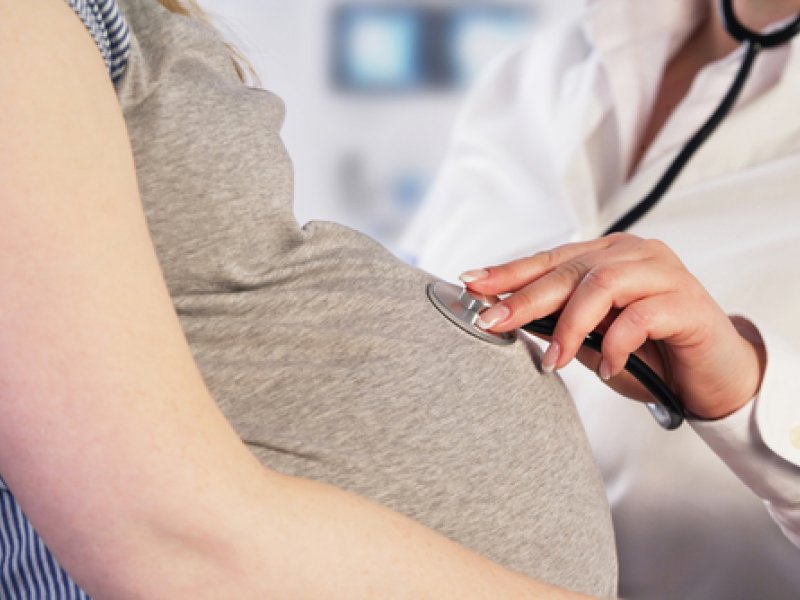
When the baby first "greets" you, his activity will increase every day, and soon you will get used to the presence of a pushing creature in your stomach. The peak of the greatest fetal mobility occurs at 24 - 32 obstetric weeks of pregnancy. By the 24th week of its existence, the baby develops its own regime: about 16 - 20 hours a day sleeps, and "walks" from 4 to 6 hours.
In terms of activity, a woman and her child complement each other: when the mother is busy with something, her movements lull the baby to sleep and he is probably sleeping at that time, but when the pregnant woman lies down to rest, the baby will immediately remind of herself with a series of tangible jolts. By late evening, fetal activity usually reaches its maximum. Moreover, the emotional connection between a woman and a child is absolutely obvious: often the baby pushes with force when his mother is scared, happy or upset.

When the gestational age exceeds 32 weeks, the baby grows so much that he can no longer spin in his stomach as he pleases. Now he just kicks the woman from the inside. Mom will definitely notice that the child has begun to move less and “fight” more, then she will have to get used to his new behavior. For example, the activity of the crumbs can become a significant obstacle to a quiet night's rest: his tremors, although they will become more rare, will noticeably gain strength and will be very painful for the pregnant woman. Now almost nothing depends on the expectant mother, except perhaps not to lie on her back, so as not to pinch the vena cava, through which oxygen enters the baby. This time before childbirth you just need to endure.
How many weeks does the second/third baby move?
The first intrauterine movements of the baby cannot be adjusted to the normative terms with an accuracy of one day or a week - these indicators are rather arbitrary and are determined by the constitutional characteristics of the woman, the thickness of the fat on her abdomen, and also the order of the child.
The movements of the firstborn appear at week 20 (according to obstetric terms), and graceful thin girls and women generally hear them 10 days earlier.
Regardless of the order of pregnancy, all babies begin to move in the uterus at about the same time. However, it has been noticed that if a woman already has a child, she will hear the movements of his brother or sister a little earlier than the first time. Moms "with experience" know how a child should move, so they are more sensitive to what is happening inside them. In addition, the physiology of a second pregnancy is somewhat different from the first: in multiparous women, the uterine muscles are more stretched and less susceptible to hypertonicity than in primiparas, so it is easier to feel the second / third baby than before. This usually happens at a period of 18 - 19 obstetric weeks.
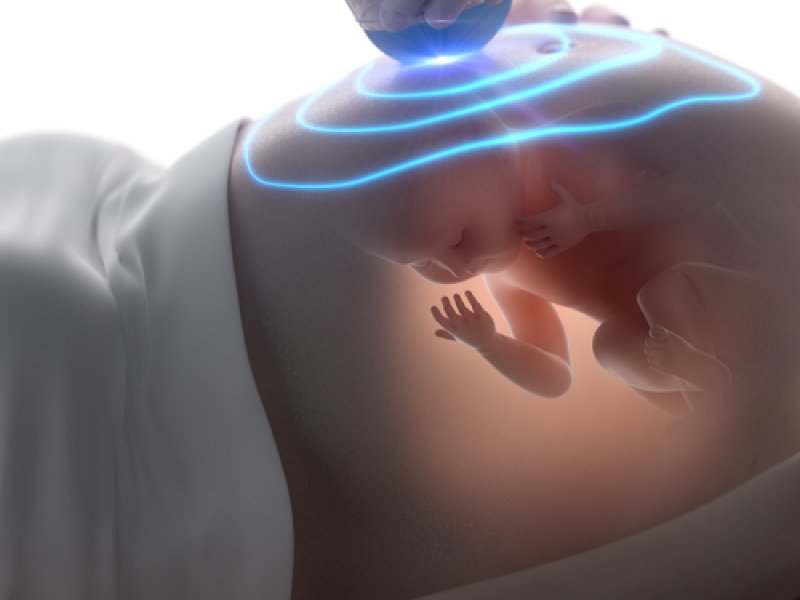
On the other hand, multiparous women perceive their delicate position as something natural, in contrast to constantly worrying expectant mothers who are carrying their first heir. They are busy raising their first child, and do not always have free time to listen for the signals of the baby inside. Therefore, in most cases, multiparous mothers notice the baby's movements at the same time as primiparas, when the fetus is already noticeably pushing.
The nature of sensations when the child moves
Waiting for the first child is an exciting and exciting period for his mother. How I want to finally feel the real presence of the crumbs in order to respond to his pushes, gently stroking the rounded belly! But how not to confuse the first movements of the child with the normal internal activity of the organism? To clarify the situation a little, we turn to experienced mothers for help. So, what do the first movements of the baby look like? Usually the answers are:
- as if a fish is swimming inside;
- the ball easily bounces in the stomach;
- as if someone gently strokes the stomach from the inside;
- a weightless butterfly flutters;
- like being tickled with a feather;
- light pushes.
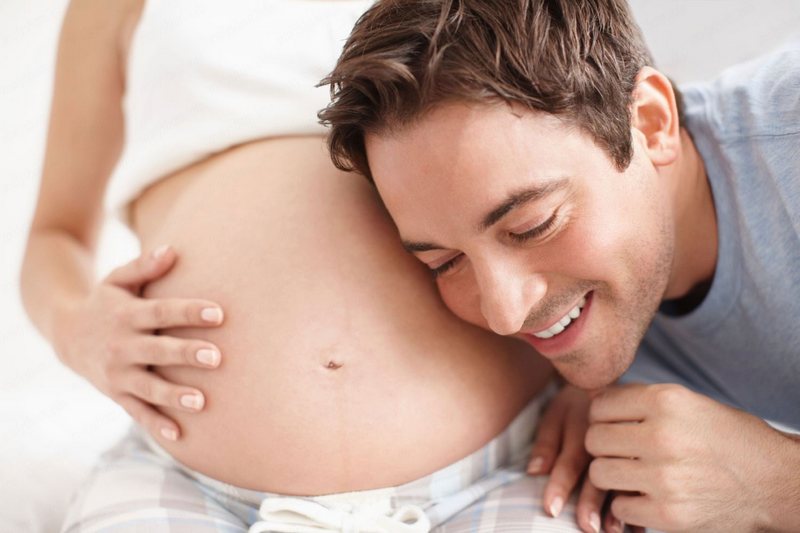
It turns out that every woman perceives the movements of the crumbs in her stomach in her own way, and this depends not only on her romantic mood, but also on her personal constitution. “Thin women” notice movements earlier than “chubby ones”, so they feel even the most weightless vibrations of the fetus.
Sometimes a pregnant woman finds it difficult to determine what caused the strange sensations inside - the activity of the baby or too violent intestinal motility. Indeed, overflows and rolling different nature sometimes it can be quite justifiably attributed to the active work of organs digestive system. To find out the true source of a specific movement inside, the expectant mother needs to be more attentive: soon she will learn to recognize the signals that the baby sends her. Don't worry if you still haven't felt your baby move. The longer the gestation period, the less shy and more active the “blazer” becomes.
How many times does a child move: average norms
There will come a time when a pregnant woman will get used to the movements of the fetus and begin to study their character. What should be taken into account first of all? Firstly, during the day it is useful to count how often and when the baby reminds of herself. This is necessary in order to determine whether everything is in order with him. Fix in memory or write down in a notebook the time of every tenth stirring of the crumbs.
Secondly, if the child is silent for a suspiciously long time, and you do not like it, eat something, and then lie down to rest after eating. healthy baby sure to “start up” when mom has breakfast or lunch. During rest, count how many times the child moved within two hours. If you feel during this time from 5 to 11 movements, there is nothing to be afraid of. If the baby continues to ignore you, get up, walk around the room, and then lie down again. As a rule, such actions help to wake up even the most notorious dormouse.

What to do if the baby is quiet
Sooner or later, every woman in an "interesting" position will study her baby's daily routine thoroughly. Now it is important to know the following: if the stomach is quiet and calm for about 3 hours in a row, it's time to get ready for an unscheduled examination at the hospital. A very alarming sign shortly before childbirth is the absence of any signs of life in the abdomen for 6 hours. This suggests that the child does not have enough oxygen and therefore he saves strength, being without movement. Only a gynecologist will be able to understand the situation: he will assess the nature of the baby's heart rate, conduct a CTG. Depending on the results of the examination, the expectant mother is either prescribed a specific treatment to make up for the lack of oxygen for the baby, or is sent for an emergency birth. The doctor makes a decision based on the individual indicators of the health of the mother and child.
During pregnancy, in the life of every woman there are important changes that affect her well-being, even mood. One of the most significant events is the movement of the baby. The expectant mother is looking forward to this moment and wants to know at what time the child begins to move, when this happens, because she feels him, the connection between them becomes even stronger.
Heat what to do measurements
walk eavesdrop flipping
the doctor has a difference
leg stage pregnancy
When the baby develops nervous system, this occurs at about 10-11 weeks of gestation (8-9 weeks of fetal development). The woman does not yet feel these movements, as they are very weak and the baby is not yet able to reach the abdominal wall. But over time, when he grows up, the woman will begin to feel unusual sensations when the child begins to slowly move during pregnancy, and it is they who indicate that the fetus is moving.
At what week does the baby start moving? This occurs at 17-24 weeks of gestation. Starting from the 28th week, its activity is especially high and movements can be felt very often. But these are approximate data, since it is very difficult to say exactly how long a woman will feel a stir, everything is purely individual. It even depends on the physique of a woman, for example, thin girls can feel the movement of a child earlier than plump ones.
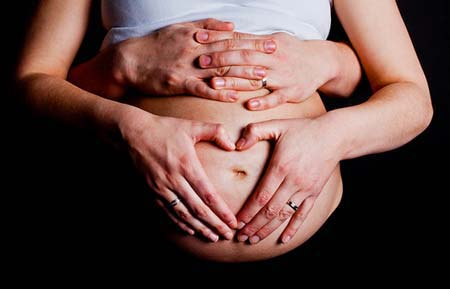
A small heart beats inside
When the baby is moving
To avoid further problems, a pregnant woman should know at what week of pregnancy and how the baby begins to move, signs, which characteristic sensations are normal and which are not. First of all, the stomach must grow, and there must also be a heartbeat and movement of the child. Having an idea about this, the woman will know what to expect and, in case of discrepancy, will consult a doctor in time. The activity of the child changes with each subsequent month, so it is very important to keep track of all changes.
So, how to understand that the very long-awaited moment has come when the fetus begins to noticeably move.
- You are most likely to feel the movement in the evening or at night. With an active lifestyle, the expectant mother may not notice anything. Small bumps are considered normal.
- Also after eating - eat something and be in a calm position. It will start moving, you can feel it.
- According to the testimonies of women who have already given birth, the movements of the baby are similar to the swimming of a fish, the fluttering of a butterfly, as well as the processes of the gastrointestinal tract. It may also feel like stroking or tickling the inside of the abdomen. Such symptoms appear already at 18-20 weeks.
- 30-32 weeks are characterized by slight tremors of the upper and lower abdomen, it depends on where the baby is located.
Differences between the first pregnancy and subsequent ones
The first and subsequent pregnancies can differ significantly in sensations. For example, a woman who has already given birth will feel when the fetus begins to move earlier than the one who is expecting her first child. Those who are expecting a baby for the first time often wonder when a baby begins to noticeably and perceptibly move inside the womb during 1st pregnancy. This worries the girls very much, and every slightest change makes the expectant mother worry. Such information is very important, with its help you can understand whether the fetus is developing correctly.
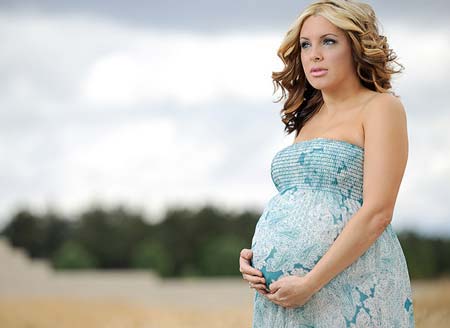
Pleasant sensations while moving the baby
There are certain differences in the process of development of the first and second child. Changes affect not only how many weeks your baby begins to move during the first and second pregnancy, but also the nature of the tremors, how often the movements occur, the location of the abdomen, and other components.
- A woman notices the growth of the abdomen earlier than for the first time. This is due to the fact that after the first birth, the uterus has not yet returned to its original state, so it will increase faster.
- The location of the abdomen also changes, now it is slightly lower than during the first pregnancy. Since the abdominal muscles are no longer able to hold it as before.
- The movements of the child are also felt earlier, but this is due to the fact that the expectant mother herself, based on her experience, can distinguish between the activity of the child and the processes of the gastrointestinal tract.
The third pregnancy also differs from the previous ones in that all processes are felt earlier - the dynamics of the baby, the growth of the abdomen and all other signs. This is quite normal, because a woman already knows what will happen to her throughout the entire process of bearing a fetus.
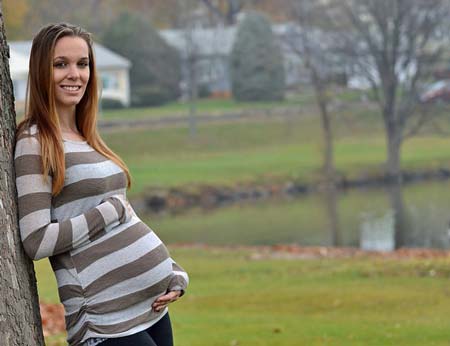
Mom and baby need fresh air
Don't panic
A correctly proceeding pregnancy largely depends on the behavior of the expectant mother, or rather, her attentiveness to the unborn child. It is not enough to know only at how many months the child begins to actively move in the stomach, it is also important to monitor the nature of these movements, because with their help it is possible to diagnose the presence of deviations in time.
Timely access to a doctor is a guarantee healthy development Therefore, at the slightest inconsistency, measures must be taken immediately. Knowing when you first felt your baby, you can even determine the approximate date of birth.
- A number of factors influence the behavior of an unborn child. Often he behaves restlessly if the flow of oxygen is disturbed. This can happen when the mother is in an uncomfortable position when she is in a stuffy or smoky room. For example, when a woman lies on her back or sits with her legs crossed, this can provoke discomfort in the child. To feel better, you need to change your position or go out into the fresh air.
- If the baby moves too often, it is necessary to consult a gynecologist so that he eliminates the risk of premature birth.
- Sometimes the activity of the fetus can cause pain. This is not scary, as it can simply put pressure on the bladder and other nearby organs.
- Also, with hiccups, the fetus can push, but you need to sound the alarm when this does not stop for a long time. This rule also applies to all other symptoms.
- Track the nature of the movements of the baby, this is useful for the doctor. Also remember when you first felt his presence.
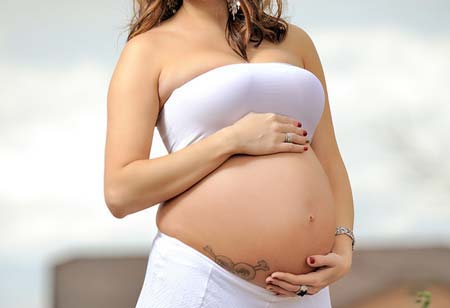
happy pregnant
The dynamics of fetal development
When a child begins to move strongly in the stomach, the expectant mother immediately gets worried and follows every new movement. This is correct, but often girls exaggerate and sound false alarms. To prevent this from happening, you need to know and understand what affects the activity of the fetus. Below are described all the processes that occur with it, and the reasons for certain changes.
| A week | What's happening |
| At 8-10 weeks | The nervous system begins to develop: nerve endings and fibers appear. Already during this period, he moves in the womb, but she still cannot feel it. |
| At 20 weeks | The fetus develops, increases in size, so it can actively move in the uterus. Since there is enough free space in it, the mother may feel slight tremors. |
| At 25-28 weeks | The baby is more and more dynamic, plays with the umbilical cord, can even knock with his legs. |
| At 32-34 weeks | During this period, he already occupies a static position, less active. |
| At 35-38 weeks | Growth increases significantly, body weight also begins to make itself felt. Tremors can be rare, but they are quite strong. |
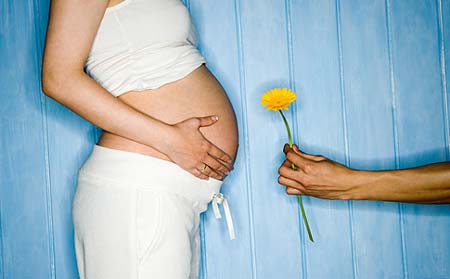
The happiest period of life
How to eliminate a possible danger?
The nature of the changes that occur with a woman's body is also important. The slightest changes should be observed regularly. At what gestational age does the child begin to move and kick, how many times a day, the nature of the movements, the symptoms that haunt - all this should be discussed with your gynecologist and the necessary measures should be taken in time.
What you should pay attention to.
- If the baby is no longer moving 3-4 hours, you need to start to worry, since it is at this time that he can sleep. Guessing when he sleeps is impossible at first - he decides when it's time to rest.
- If you are concerned about the dynamics of fetal activity, you can take a special Pearson test. It must be done starting at 28 weeks. If, according to the test results, you observed less than 10 movements per day, this is an occasion to consult a doctor, because such a result may indicate oxygen deficiency.
- Usually the baby should push about 7-10 times per hour. Usually in the morning from 4 to 10 o'clock he usually sleeps, so he is at rest.
- For greater accuracy and additional confidence in the successful development of the unborn child, you can also pass the Sadowski test. Track its activity should be after eating, in the period from 19.00 to 23.00. Lying on your left side, keep track of the amount of time you felt 10 jolts. The result is the same: if there were 8-10 movements per hour, the child is normal.
Twin or one?
When the fetus begins to move noticeably, the mother can immediately think about who lives inside - one baby or two. In fact, there are no special differences between twins and one child in stirring - except that it can be felt a little earlier, at 16-18 weeks. The main thing is that there are no alarming symptoms of deviations.
Timely monitoring of changes in your body ensures a favorable course of pregnancy. The expectant mother is obliged to be interested in all the nuances of motherhood and the development of the fetus, as well as to know at what month and how the child begins to move, how he manifests himself and what should make you worry. The right attitude to motherhood is the key to the health of the baby!
The first movement of the fetus during pregnancy; one of the most anticipated moments of a young mother. The blossoming of new life in the womb begins to be felt in the second trimester. It is very important to fix the first intrauterine push. He will tell the mother and the gynecologist about the exact date of the baby's birth. If this is the first pregnancy for a girl, it is worth expecting a child 20 weeks after the first sensations of stirring.
The fetus begins to move at 8-9 weeks. But these movements are not felt in any way. future mother because the embryo is too small. To see how the future baby accidentally touches the walls of the uterus, only ultrasound will allow. Active fetal movement during pregnancy begins at 16-24 weeks.
Thinner expectant mothers feel light tremors much earlier than fuller women. In addition, early stirring in many is due to a high threshold of sensitivity. So don't worry if your toddler is running late. This means that he simply did not gain the desired body weight. With the increase in size, every movement of the baby is felt better.
How to recognize movement
There doesn't exist any general description fetal movements. Both doctors and mothers define these feelings differently. Some describe it poetically, likening the movement to the flapping of a butterfly's wings. Someone says that the sensations are like stroking or tickling from the inside. Other tremors resemble gurgling. Every woman is different. But it happens that this "gurgling" brings unbearable pain due to the strong activity of the fetus.
Why do some women move the fetus with more force, while others have less? Many explain this by the fact that the character of the unborn baby is already formed during pregnancy. Mom feels the mobile little one already on such early stages his life. But for the most part, very active stirring informs a woman about some intrauterine problems, so it is very important for a pregnant woman to control these sensations.
Too sharp and prolonged jolts “say” that the baby does not like something. If the child’s behavior does not change when changing positions, and the movements of the fetus bring pain for several hours, consult a doctor.
To calm the frisky behavior of the fetus, it is necessary to change the position. With such lunges, the baby reacts to the uncomfortable position of the mother, especially when lying down. For example, it is contraindicated for pregnant women to lie on their back for such a period! It is worth turning over, and the little one calms down.
If the movements are too rare and sluggish, it is recommended to eat something sweet. Carbohydrates with blood flow will quickly reach the child and recharge it with new forces.
The number of movements at various stages of pregnancy
From about 25 weeks, the fetus, according to the norms, should move at least 10 times per hour. Your baby, just like you, takes some poses and changes positions. Hence the "bubbling" feeling. If you begin to feel rhythmic jolts, don't worry, the baby is having hiccups. This process will not cause any harm to the child, you will soon get used to it. During this period, hiccups can be repeated several times a day.
Be sure to lead. In the future, you can refer to it to understand why your child is moving. Write down every little thing from 21 weeks. Recognition of your voice, the voices of other family members, the reaction to loud sounds, to a pleasant melody - your little one already feels all these sounds with you.
Sometimes the movements may disappear altogether. This means that the fetus fell asleep. These events usually do not last longer. three hours. It is also not uncommon for your unborn child to make itself felt at night. The nascent life itself decides at what time to be awake and at what time to rest.
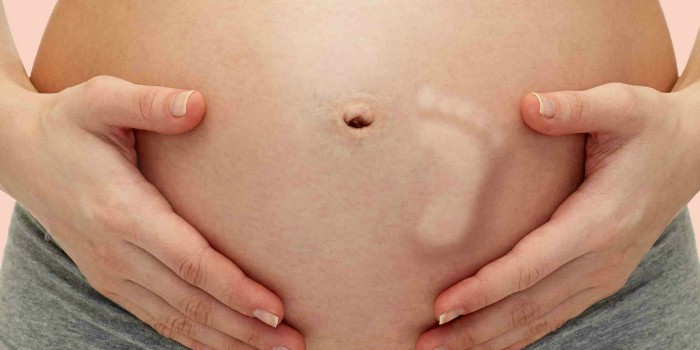
A baby can perform up to 500 different movements per day. This is mainly observed from 28 to 32 weeks. You won't feel any movement. Many factors influence their palpability: the amount of amniotic fluid, the thickness of the abdominal wall, the position of the fetus and placenta, as well as the mobility of the child and the sensitivity of the pregnant woman herself.
From the 32nd week, activity begins to decrease, but from that moment on, its position in the uterus is already determined by the movement of the fetus. It's just that the size of the baby at this time increases greatly, and the uterus - slightly. If the baby is in the breech presentation, you will feel the main shocks in the lower abdomen. If the tremors are above the navel - head presentation.
At the end of the last trimester, fetal movements become rare, but do not disappear completely. If the mother does not feel any movement within 12 hours, you should consult a doctor.
Symptoms and methods for determining hypoxia in the fetus
Too much lethargy or violentness of the baby's body movements in most cases indicates oxygen starvation. The causes of hypoxia are different: cardiovascular diseases, diabetes mellitus, fetal malformations and much more. To identify the disease, an ultrasound or cardiotocography is performed.
The cardiotocography procedure is an examination of the heartbeat. For an hour, the device measures your baby's heart rate. The norm is considered to be a changing rhythm from 120 to 160 beats per minute. In severe hypoxia, the mark drops to 90 beats. If this disease is detected for a period of more than 30 weeks, the woman is given a caesarean section.
To identify such violations on their own, a pregnant woman needs to use the "Count to 10" technique. From about 28 weeks, between 9 and 21 hours, a woman should count the movements. The tenth in a row is recorded in a special card. If within 12 hours the number of shocks exceeds 15, or vice versa, the fetus is inactive, consult a specialist.
Fetal movement during second pregnancy
The first baby starts to move at 20 weeks. But what if you are expecting a second or third baby? This period, according to women, begins a little earlier. It is difficult to say exactly when the first movement will occur. Each organism is individual. Someone gains weight very quickly, someone slowly. The time limit for the start of movement is still 16-24 weeks. But when your baby shows himself - it's up to him.
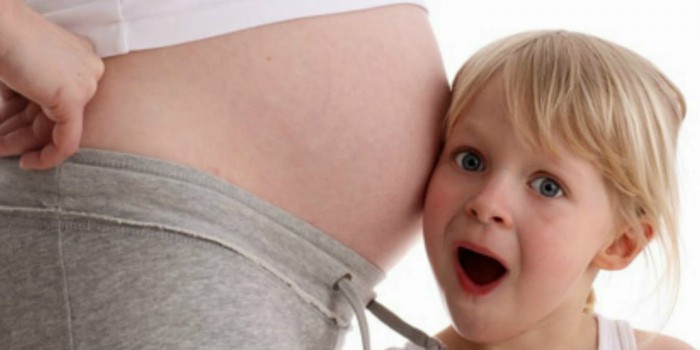
Obstetricians claim that the mother feels the first movement during a second pregnancy 2-3 weeks earlier. But this only means that the feelings of the pregnant woman are aggravated, and the lived experience helps to more accurately determine the movement.
It happens that a nulliparous girl is misled by her own intestines. This is normal. In the first months of the birth of a new life, the whole organism is rebuilt. 15-20 weeks is a time of rapid change in the functionality of the intestines, which is very easy to confuse with the activity of the baby. A woman giving birth is able to distinguish peristalsis from the tremors of a child.
Thank you. Your message has been sent
Did you find an error in the text?
Select it, click Ctrl+Enter and we'll fix it!
